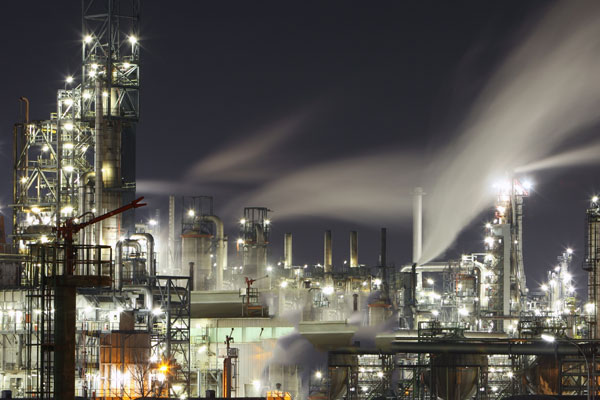
How To Detect A Water Leak with Thermal Imaging
Leak Detection-
Leakages and moisture infiltration can cause serious damage to a home or structure, & they are often problematic to detect until it is too late. However, without employing destructive testing, a thermal imaging camera and the proper settings can be used to discover hidden water and moisture concerns.
Building moisture can come from various sources, including humidity (in any season), condensation, pipe leaks, rain and snow, and even the breathing of humans and animals. Although a small amount of moisture is normally safe, leaks or significant condensation can cause serious problems. Although a thermal imaging camera cannot “see” moisture in walls, it can detect minor temperature differences and patterns that suggest the presence of water. (leak detection)
How Do One Find A Leakage Underground?
Underground water leaks can harm a building’s foundation and other components significantly. Because leaks occur beneath the concrete foundation or in the ground, they are difficult to detect. Finding and repairing a water leak below is challenging without harming the concrete foundation or digging up the dirt. This could lead to additional problems than just the plumbing. (leak detection)
Thanks to modern leak detection technology, the great news is that no digging in the dirt or destroying concrete is required. Instead, thermal Imaging makes detecting water leaks considerably easier, allowing you to do so without jeopardizing your building’s foundations or structure.
Thermal Imaging is a procedure for creating an image or video of the problem areas in a scanned location. It allows the user or operator to observe the whole plumbing system up to a few feet below the concrete or ground level without manually removing any dirt or soil. It’s the most convenient way of leak detection to find and fix any plumbing or structural issues.
What is the Procedure for Thermal Imaging?
Infrared imaging and measurement cameras are used in thermal Imaging to discover problem areas from afar, such as a water leak. This eliminates the need to inspect each water pipe for leakage on a personal basis. Thermal Imaging can help you save time, money, and damage to your property. Thermal Imaging might be able to detect small leaks that aren’t visible to the naked eye.
Thermography, or infrared thermography, detects radiation and creates a thermal image of it by using a long infrared area of the electromagnetic spectrum lasting from 9,000 to 14,000 nanometers. Predictive maintenance uses thermal Imaging as a technique as well. The thermograms are the photographs. There are many merits to using infrared thermography. Thermography can detect warm objects (humans and other warm-blooded organisms) against a colder background or surroundings. As a result, it’s commonly used for surveillance and defense, leak detection & medical purposes.
Patterns of Humidity| leak detection
Moisture spreads through buildings in predictable patterns depending on where the water is. Moisture is one of the most difficult problems in a structure to detect; the signs are subtle & easy to miss until water starts to flow from the ceiling. Thermography training can help identify and choose the right camera for the job.
What Is the Best Leak Detection Thermal Camera?
- Minor heat differences are caused by moisture. Therefore, a thermal camera capable of detecting moisture must have high resolution and thermal sensitivity (NETD), which means it can detect even little temperature differences. The lower the thermal sensitivity, the better; a camera with 30mK sensitivity is suitable for moisture applications, while a camera with 100mK sensitivity is better for industrial applications and detecting large temperature fluctuations.
- Additionally, choosing a thermal camera that allows you to regulate the level and breadth of the thermal image is suggested. When the picture is configured at around 10°C or 20°C, moisture issues become more visible, allowing even tiny temperature differences to be seen.
- The FLIR E6 is a good choice for simple applications, while the FLIR E8 and FLIR E95 offer higher resolution.
Keep Moisture Metres in Mind
While thermal cameras can help locate water and estimate its quantity, recognizing a pattern that resembles moisture does not guarantee that water is present. There could be several reasons for the temperature difference, including moisture in the walls. When in doubt, use a moisture meter.
Moisture meters like FLIR and Extech come with a variety of detection options for any application, and some, like the FLIR MR176, even combine thermal Imaging and moisture measuring capabilities for both locating and testing moisture.
Make sure to take your time when inspecting a building for water leaks. A thermal imager detects temperature changes generated by evaporation, capacitance, or conduction, and these processes can be influenced by whether or internal humidity. Consider contacting stopleakloss for a comprehensive explanation of how thermal imagers detect moisture.
- Thermal Imaging is a fantastic tool to have when you don’t know where the leak is coming from. But regrettably, it takes a long time to go through each plumbing line and will result in expensive repairs.
- Thermal Imaging detects tiny temperature variations caused by moisture or water. A few minutes are required to scan a pipe. Once the leak has been found, your plumber may get right to work on fixing the problem. That means you’ll be back on track in no time!
Do you suspect that your home or office has a water leak? Learn more about thermal Imaging and whether it’s right for you. We offer various methods of leak detection to complete the work quickly and properly using our specialized leak detection equipment. Protect your valuables from danger. Prepare ahead of time by identifying probable issue places. Allow us to assist you in prioritizing safety. Please visit stopleakloss.com or our website to get in contact with us.



